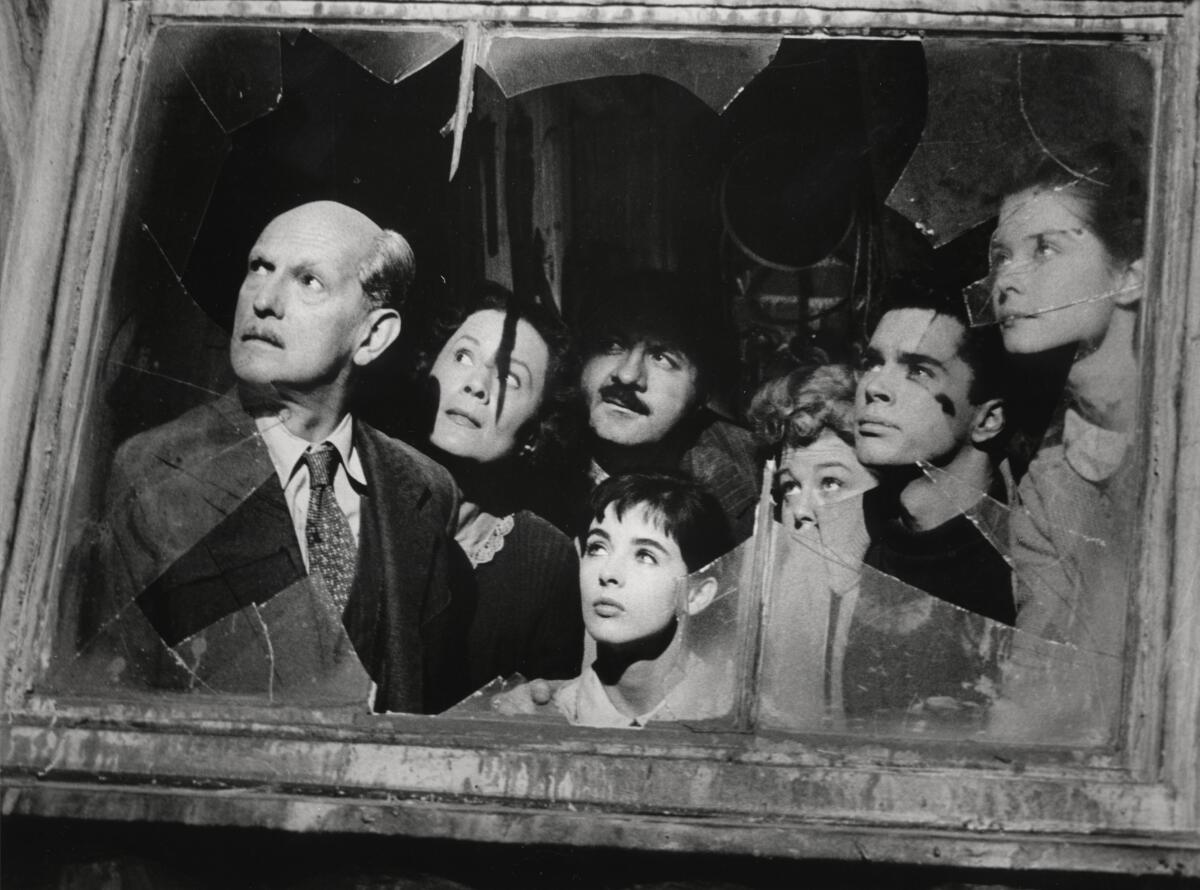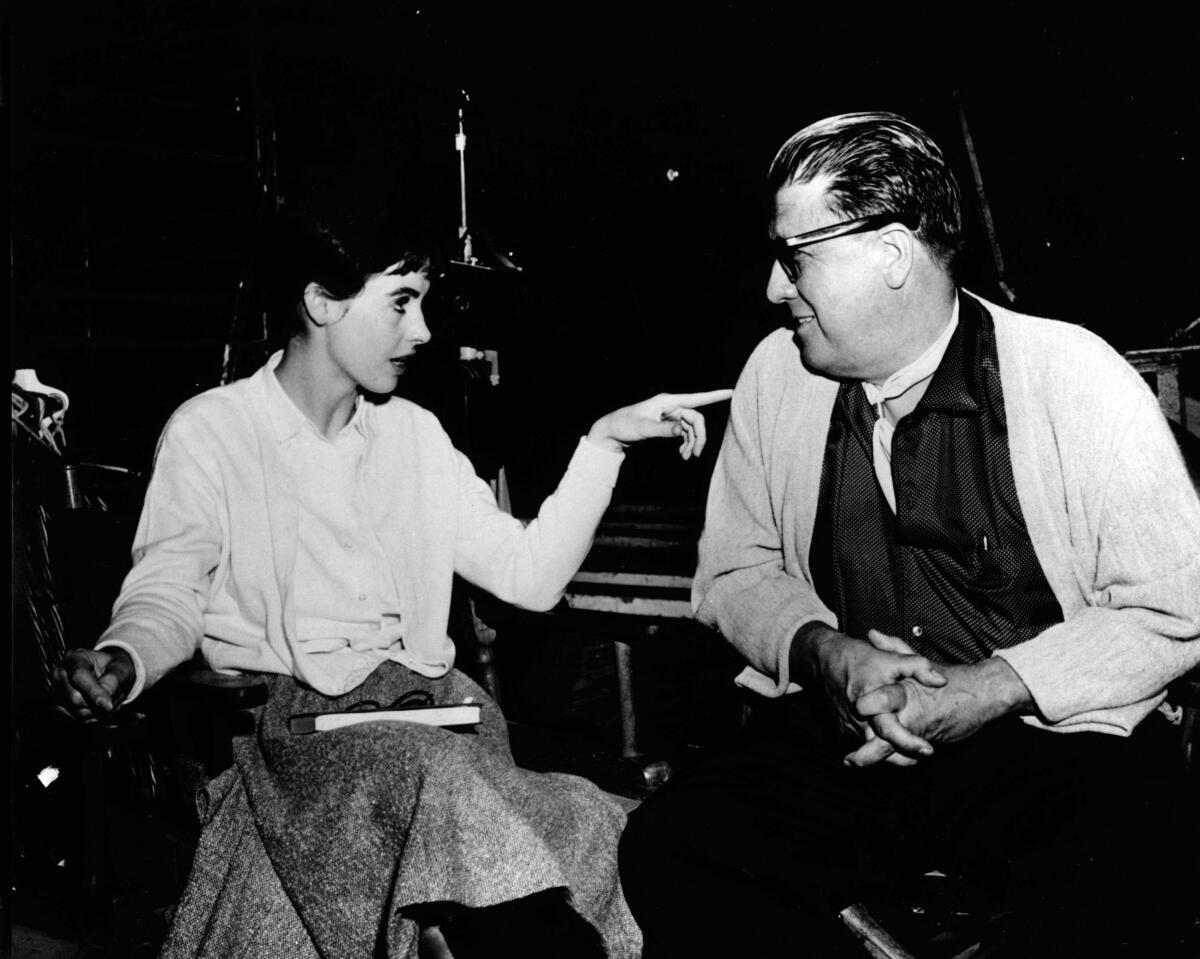‘The Diary of Anne Frank’ gets a 60th anniversary salute at the academy

George Stevens made a name for himself directing such classics as the sophisticated 1936 Fred Astaire-Ginger Rogers musical “Swing Time,” the rip-roaring 1939 adventure “Gunga Din” and the charming 1943 romantic comedy “The More the Merrier.”
But World War II changed his life and his film career.
Stevens, as a member of Special Services, documented the Normandy invasion on D-day and the liberation of the Dachau concentration camp.
“Having been in Dachau, I think he saw humanity at its worst,” said his son, honorary Oscar-winning filmmaker George Stevens Jr. “He never lost kind of his optimistic spirit. But I think he saw what human beings were possible of doing.”
Returning home to Hollywood, Stevens’ films became far more serious. He earned Oscars for 1951’s “A Place in the Sun” and 1956’s “Giant,” and a nomination for the 1953 western “Shane.” And he returned to the horrors of World War II with the acclaimed 1959 drama “The Diary of Anne Frank.”
On Monday the Academy of Motion Picture Arts and Sciences’ annual George Stevens lecture series celebrates the 60th anniversary of the film — and commemorates what would have been Frank’s 90th birthday — with the screening of a new 4K restoration at the Samuel Goldwyn Theater.
Anne Frank was an eternally optimistic teenager who wrote about her hopes and dreams and coming-of-age difficulties while hiding from the Nazis from 1942 to ’44 with her family and others in a small attic in Amsterdam above a business. They were captured in 1944; Anne died in Bergen-Belsen shortly before the end of World War II.

Her father, Otto Frank — the only one of his immediate family who survived the Holocaust — had her diary published in 1947. “The Diary of a Young Girl” was translated into 67 languages and transformed into a Tony- and Pulitzer Prize-winning 1955 Broadway play. The 1959 film earned several Oscar nominations including best film and director and won three, including supporting actress for Shelley Winters as Mrs. Van Daan, the one attic resident Anne didn’t like.
The film featured several actors from the original play, including Joseph Schildkraut as Otto Frank, Lou Jacobi and Gusti Huber, and marked the film debuts of Millie Perkins as Anne and Diane Baker as her older sister, Margot. Rounding out the cast were Richard Beymer and an Oscar-nominated Ed Wynn.
The screening, co-sponsored by the Los Angeles Museum of the Holocaust, will feature a discussion led by filmmaker Jon Kean with Perkins, Baker, George Stevens Jr. and Holocaust survivor Lya Frank.
Before Stevens began production on the film in 1958, he and his son, who was the associate producer, traveled to Europe. “Dad was on the jury at the Cannes Film Festival,” George said. “Then we went to Munich and the next morning went to Dachau. It was his first time there since 1945.”
The two eventually made it to Amsterdam. “We went to this little office and this tall man opened the door,” he recalled.
“It was Otto Frank. We went in and sat with him and his wife, whom he met in Auschwitz. He was getting the first look at the man who was going to tell his daughter’s story. After a moment, he went over to the filing cabinet and brought something wrapped in cloth and put it on the desk and unfolded it in front of us. It was [Anne’s] red diary.”
The father and son silently leafed through the pages, “and seeing the photographs of movie stars she’d pasted in and her handwriting. It was just this tremendously emotional experience.”
Baker and Perkins had a similar experience when they met Frank in Los Angeles. Baker remembers doing a screen test with Perkins the day Frank was visiting the set. “He came up to me during the shooting,” she said. “He looked at me and there was sort of the beginning of tears and he said, ‘You remind me so much of my daughter.’ I had no words.”
Shortly thereafter, the two actresses were invited to have dinner with Frank at the home of Frances Goodrich and Albert Hackett, who had written the “Diary” play and screenplay.
“I remember we just sat talking, sharing,” Baker said. “It was the most extraordinary moment.”
“George said to me, Mr. Frank wanted to go into the library so you could talk to each other privately,” said Perkins, who was a successful model before she was cast as Anne. “I went in the room with him alone and we both sat there, very shy, both of us. He was a terribly nice man. I didn’t know what to say to him. I stood there. You know sometimes people when they’re a little nervous, they take their thumb and they have all their other fingers holding the thumb tight?”
Perkins said she “was sitting there with both my thumbs closed that way. I looked down and Mr. Frank is sitting there with his hands the same way. Then I looked up and he had tears in his eyes and he said — this moves me every time I say this — ‘Anne used to sit that way all the time.’”
The actress never saw Frank again. She learned that he didn’t watch the movie until much later because it was too difficult for him in 1959. “I never really knew how he felt about the movie ever,” she said. “I always wondered.”
But when she was invited to the Anne Frank House in Amsterdam for a special event recently, “one of the girls who works there came up to me and said, ‘Do you have a copy of the letter Mr. Frank sent you?’ I said, ‘What letter?”’

Perkins learned that he had sent her a letter after he saw the movie. “It went to California,” the woman told her. “We assumed that you always had it. But they sent us a copy of it because they have archives here with all these records.”
She has a copy now. “It was a letter telling me that he loved the movie,” said Perkins. “That he loved me in the movie, saying he was so proud and so pleased with how we did the movie and my performance was what he wanted it to be and how he wanted to thank me for doing it.”
“The Diary of Anne Frank” was historic, said Beth Kean, executive director of the Los Angeles Museum of the Holocaust. “This was the first American-made Holocaust film.”
With the rise of anti-Semitism and white nationalism in the U.S. and around the world, “The Diary of Anne Frank” is more important than ever. “We know what can happen when hatred goes unchecked,” Kean said. “Watching it 60 years later with the hate rhetoric that we are seeing and where people divide others round them, we think it’s really an important time to show the film again because it’s something that a lot of young people can relate to because Anne Frank’s diary is really a coming-of-age story.”
“Anne Frank remained so confident in her life thinking,” added museum board chair Michele Gold. “She had that hope for the future, didn’t she?
'The Diary of Anne Frank'
Where: Samuel Goldwyn Theater, 8949 Wilshire Blvd., Beverly Hills
When: 7:30 p.m. Monday
Tickets: $3-$5
Info: oscars.org/events/diary-anne-Frank-1959
More to Read
Only good movies
Get the Indie Focus newsletter, Mark Olsen's weekly guide to the world of cinema.
You may occasionally receive promotional content from the Los Angeles Times.








